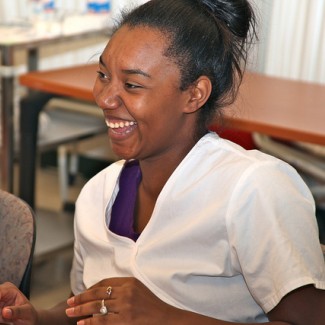If you have ever experienced the sudden onset of a throbbing pain in your forehead when you chow down on a frozen ice cream treat or sip a cold drink too quickly, then you’ve felt a “brain freeze”.
In reaction to a cold stimulus being rapidly consumed, the brain freeze causes a temporary sharp headache in the temples. While it is mostly referred to as a brain freeze or ice cream headache, the actual medical term for a brain freeze is sphenopalatine ganglioneuralgia. Since this sounds more like a tongue twister than a type of headache, let’s just stick to calling it a brain freeze. Although there is a significant lack of research on this seemingly universal human phenomenon, the following is what science does know about the brain freeze.
A Nervous Response

Once the blood vessels are fully dilated, the pain receptors of the nervous system release the prostaglandins that enhance sensitivity to pain and cause inflammation. Meanwhile, signals are being sent through the trigeminal nerve to warn the brain that there is a problem. Since this nerve specializes in sensing pain in the face and forehead, the brain misinterprets the transmission from the trigeminal nerve as coming from the forehead in what is known as referred pain.
After cramming too much of a cold substance into the heat inside your mouth on a hot summer day, it is very common to experience a brain freeze. While the sequence of events chemically inside the body seems rather complex, the phenomenon often hits after just 10 seconds of the frozen item brushing against your palate. The brain freeze usually reaches a peak in 25 to 35 seconds, but the entire stabbing headache can last anywhere from several seconds to two minutes. In the majority of circumstances, individuals report feeling the deep ache in the forehead, but some may feel the pain radiate behind the ears. This is particularly true if you happen to get ice cream or a similar chilled treat stuck within your tonsils. Interestingly enough, sensing cold further down the throat past the tonsils results in no brain freeze.
It is estimated that only one third of the population actually experiences the phenomenon firsthand when consuming something cold, 90 percent of chronic migraine sufferers experience brain freezes in the same place as their migraines. Therefore, neurological researchers hypothesize that migraines and brain freeze headaches are actually physiologically similar in their affects on the human brain. Of course, the major difference is that those with migraines are already unusually sensitive to stimuli that cause no response with most of us. In a recent study by Harvard Medical School, researchers also discovered a link between brain freezes and the headaches that are caused by traumatic brain injuries.
Can You “Cure” a Brain Freeze?
If you no longer want the discomfort of brain freezes to ruin your delicious frozen delight, there are a number of solutions that can help prevent the painful headache from occurring. Instead of wolfing down ice cream in a matter of seconds, eat it more slowly to reduce the likelihood of triggering the rapid chilling and warming cycle. It can also be beneficial to keep your mouth cold while eating or drinking without giving it time to warm up. Once a brain freeze starts, alleviate the pain quickly by placing your warm tongue over your palate. Then, you can keep enjoying another scoop in peace!












I wwas very happy to discover this great site. I need to to thank you for ones time just for this fantastic read!!
I definitely enjoyed every bit of it and I have you book marked to look at new things in your website.